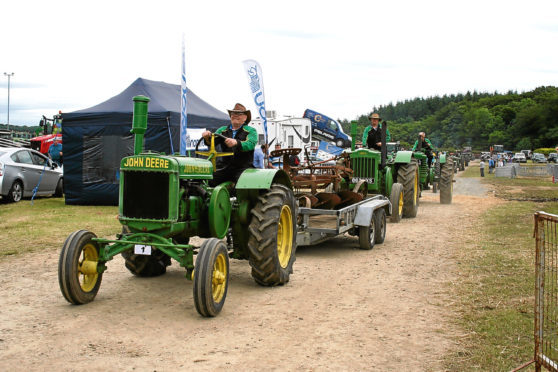John Deere’s first own design of tractor after its buyout of the Waterloo Gas Engine Co, the Model D, was a huge success but it was soon shown to be deficient after International Harvester launched its Farmall range of tractors. These tractors, as the named suggests, were able to do all farm tasks, including cultivation and belt work, and more importantly had the ability to work on inter-row tasks in growing crops.
The John Deere D was unable to do the latter because of its fixed axle widths fore and aft and the width of its steel wheels to get maximum traction.
Management had already been thinking that they also needed a smaller machine in their catalogue and this led to the design of the Model C, first built in 1927. It was a high-stance machine with a tricycle variant available. However by 1928 the tractor became known as the GP, standing for General Purpose. Variants included a low orchard version and very few three-wheel versions.
One of the crops the tractor was aimed at was potatoes and special wide-tread tractors with narrower rear axles were produced. Only 203 were built and they were all shipped to Maine which was a major potato growing area. Lindeman of Yakima in Washington were known for fitting full-length tracks on JD skid units and they did so with 11 GPs.
The GP was not produced in the numbers that the larger D were and was eventually replaced when the later models A, B, G and H were launched throughout the 1930s and early 1940s. The secret of their success, like all row crop tractors, was the ability to fit front mid and rear mounted tool bars to allow cultivation between the rows of growing crops. The higher stance allowed space to fit a tool bar between the axles and to gain clearance over higher crops such as maize.
Because it was produced during the great depression and the fact it was quite a big and heavy tractor expensive sales were slow compared to the later and lighter A and B models leaving the GP as one of the most collectable of John Deeres by today’s enthusiasts.
